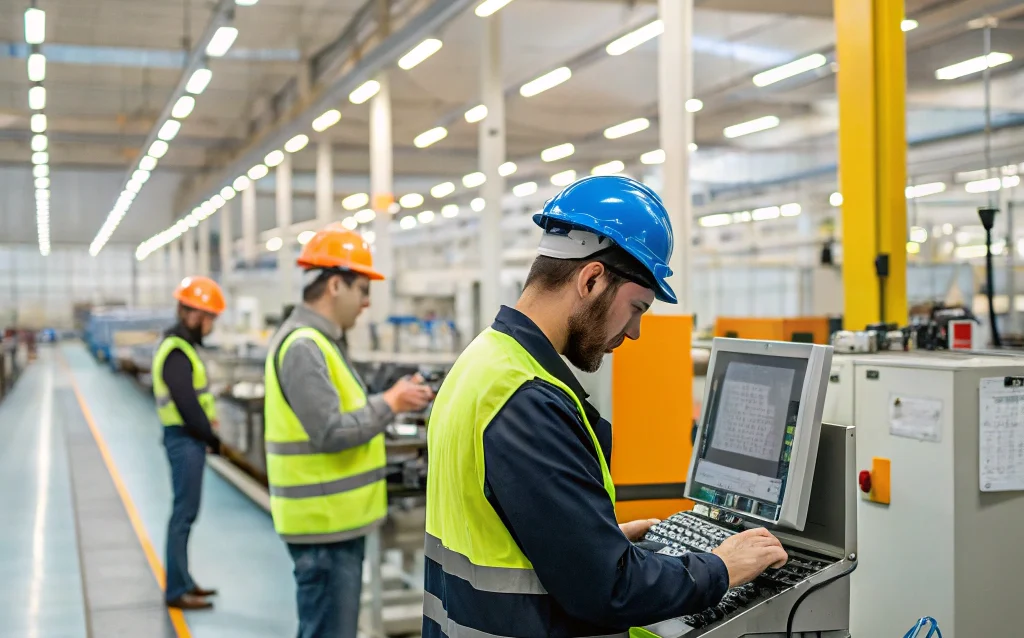AI is rapidly reshaping industries across the globe, and manufacturing is no exception. As factories become more connected and data-driven, organizations are increasingly turning to AI-powered workflow automation to streamline operations, improve efficiency, and accelerate digital transformation. This shift is not just about replacing manual tasks with machines—it’s about unlocking a new level of smart manufacturing where intelligent systems enable real-time decision-making, predictive analytics, and dynamic adaptability. In this article, we explore how AI-powered workflow automation is redefining manufacturing operations and paving the way toward more resilient, competitive, and innovative production environments.
The Evolution of Manufacturing Automation
Manufacturing has seen multiple waves of automation—from mechanical systems to programmable logic controllers (PLCs), and now to highly sophisticated digital and AI-enhanced systems. Traditionally, manufacturing automation was driven by fixed rules and repetitive tasks, functioning within predefined constraints. These systems lacked flexibility and struggled to adapt to dynamic production requirements.
With the breakthrough of AI technologies such as machine learning and natural language processing (NLP), automation is shifting from static sequences to intelligent process automation. Now, manufacturing workflows can learn from data, adapt in real-time, and even collaborate with human operators through conversational interfaces. This evolution marks a move toward truly smart manufacturing systems where machines are not just tools but AI-driven collaborators capable of continuous learning and optimization.
Key Technologies Behind AI-Powered Workflow Automation
The heart of AI-powered workflow automation lies in several converging technologies. Machine learning and predictive analytics play a critical role by enabling systems to process historical and real-time data to forecast equipment failures, demand trends, and production bottlenecks. This allows manufacturers to make proactive decisions that save time and costs.
Natural Language Processing enables seamless interaction between human operators and machines, improving coordination, reducing downtime, and enhancing safety. When integrated with the Internet of Things (IoT), AI can oversee interconnected machines and systems, ensuring seamless data flow and automation across different production stages.
Hyperautomation—an approach that combines AI, robotic process automation (RPA), and advanced analytics—enables the automation of complex, end-to-end processes with minimal human intervention. Moreover, the rise of low-code and no-code platforms empowers manufacturing teams to build, modify, and scale automation solutions quickly without relying heavily on IT departments, enhancing flexibility and responsiveness.
Core Benefits for Manufacturing Operations
AI-powered workflow automation delivers substantial benefits across every layer of manufacturing. Automating repetitive and time-consuming tasks translates into significantly higher productivity and operational efficiency. AI-driven vision systems and real-time monitoring boost quality control by identifying defects early in the production cycle, reducing waste, and upholding product standards.
Predictive maintenance powered by machine learning models reduces unplanned downtime by identifying equipment wear and potential failures before they occur. This not only protects assets but also minimizes production interruptions. Smart resource allocation and automated supply chain management lead to better material usage, optimal inventory levels, and greater responsiveness to market changes—overall lowering operational costs and improving ROI.
AI-Powered Workflow Automation in Action
The application of AI in manufacturing is not a futuristic concept—it’s already transforming shop floors around the world. Companies are implementing AI-enabled assembly lines that adjust operations based on incoming data, leading to faster turnaround times and reduced errors. Real-time defect detection using computer vision reduces inspection times and enhances product consistency.
Others are adopting smart inventory systems that forecast demand and automate reordering, ensuring stock levels remain optimal without overages or delays. These implementations lead to more efficient worker allocation, streamlined processes, and ultimately increased customer satisfaction. Success stories stretch across sectors—from automotive to electronics—demonstrating the tangible advantages of intelligent process automation.
Digital Transformation in Manufacturing
AI-powered workflow automation is accelerating the digital transformation of manufacturing. It facilitates the end-to-end digitization of core processes, bridging physical and digital environments into a cohesive, data-driven enterprise. Digital twins, real-time analytics dashboards, and predictive simulation models all become possible when AI is deeply integrated into operational workflows.
Such integration enables smart manufacturing strategies that are essential for future-proofing businesses. By centralizing data from machines, systems, and external sources, organizations can drive continuous improvement, agility, and innovation. Moreover, digital transformation supported by AI fosters more sustainable practices through better energy management, waste minimization, and optimized supply chains.
Challenges and Considerations
Despite its transformative potential, the adoption of AI-powered workflow automation comes with challenges. Integrating advanced AI capabilities into legacy infrastructure can be complex and resource-intensive. Many manufacturing environments operate with a mix of old and new technologies that may not naturally align.
Data governance is critical—organizations must ensure the security, privacy, and compliance of the vast amounts of data processed through AI systems. Workforce disruptions are also a concern, as automation may alter roles and require new skill sets. Upskilling and reskilling employees will be essential to ensure a smooth transition.
Ethical considerations, including algorithmic bias and AI transparency, must be addressed to build trust in automation systems. Manufacturers must remain committed to responsible AI practices that align with their values and regulatory frameworks.
The Future of Smart Manufacturing with AI
Looking ahead, the future of manufacturing is increasingly intelligent, autonomous, and collaborative. Emerging trends such as Edge AI enable faster, decentralized decision-making by processing data closer to the source. Explainable AI (XAI) is gaining traction, offering greater visibility into how AI systems make decisions—crucial for regulated environments and safety-critical applications.
The concept of Industry 5.0 introduces self-healing systems that adapt and recover autonomously, reinforcing resilience. As AI systems become more advanced, the role of human-AI collaboration grows more prominent, emphasizing augmentation rather than replacement. Strategic roadmaps for AI adoption must include governance frameworks, stakeholder alignment, and continuous evaluation to maximize impact and sustain innovation.
Conclusion
AI-powered workflow automation is reshaping how manufacturers operate, compete, and grow. By combining intelligent technologies with connected systems and data-driven insights, organizations can unlock higher productivity, reduced costs, and greater agility. However, responsible implementation is key—balancing automation with human-centered design and ethical AI use ensures long-term success.
As manufacturers embrace this new era of smart, AI-enhanced operations, those who lead the way will not only gain operational advantages but also drive innovation that redefines industry standards. The future of manufacturing is intelligent, adaptive, and powered by AI.






